What is Complex Regional Pain Syndrome?
Complex Regional Pain Syndrome (CRPS) is a chronic pain condition that usually affects a limb (arm, leg, hand, or foot) after an injury, surgery, stroke, or heart attack. It is characterized by intense, prolonged pain that may be disproportionate to the initial injury. CRPS is believed to result from dysfunction or abnormal responses in the peripheral and central nervous systems, leading to an exaggerated pain response and other symptoms. CRPS comes in two types: Type I, which occurs without a confirmed nerve injury and is more common, and Type II, which is associated with a confirmed nerve injury. Treatment often requires a multidisciplinary approach.
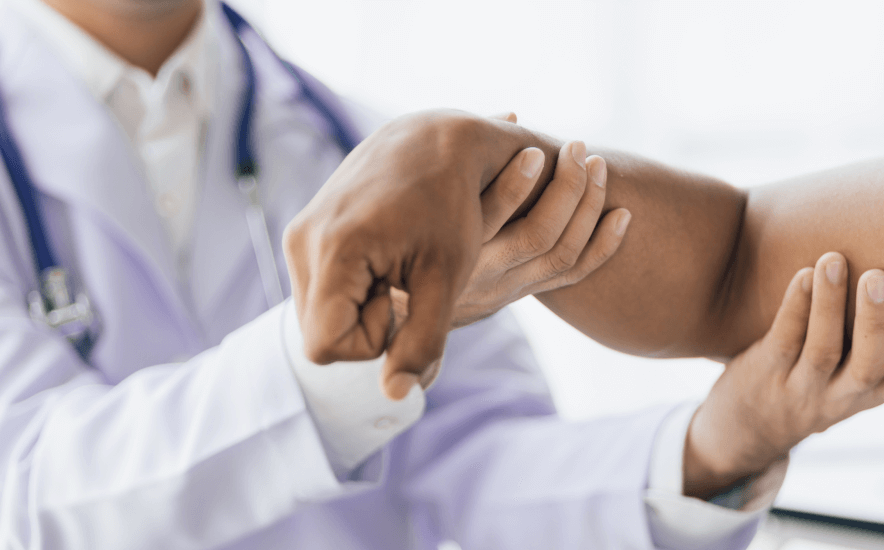
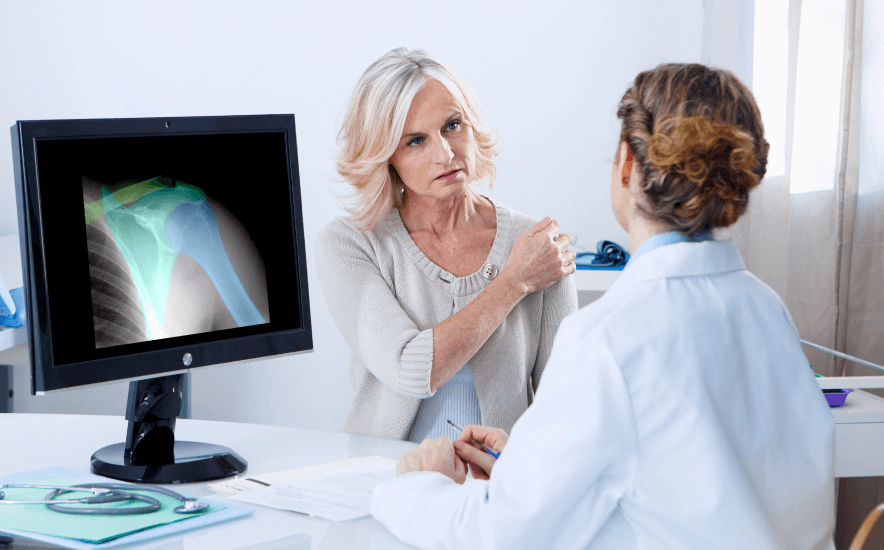
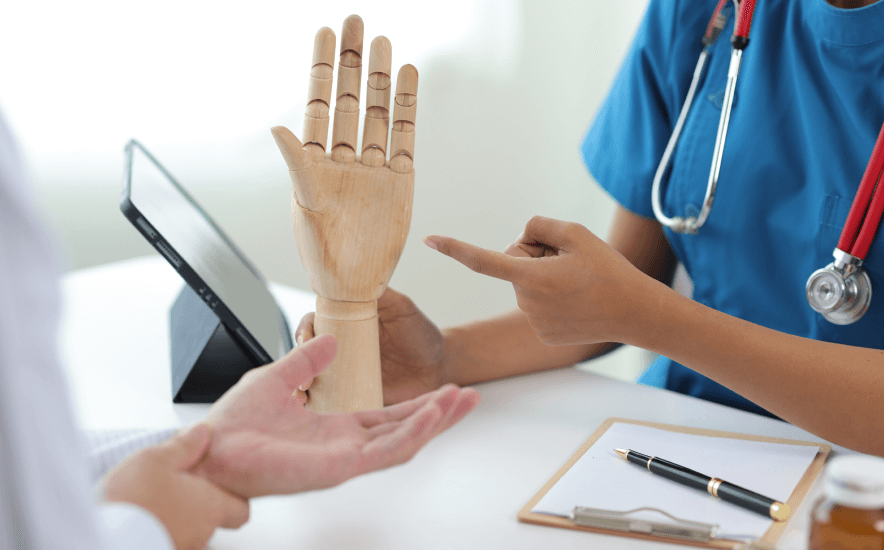
Relevant Symptomatology

Chronic & Severe Pain

Sensitivity to Touch
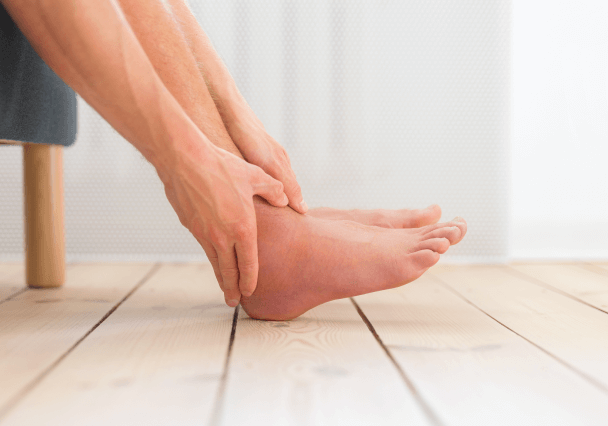
Swelling
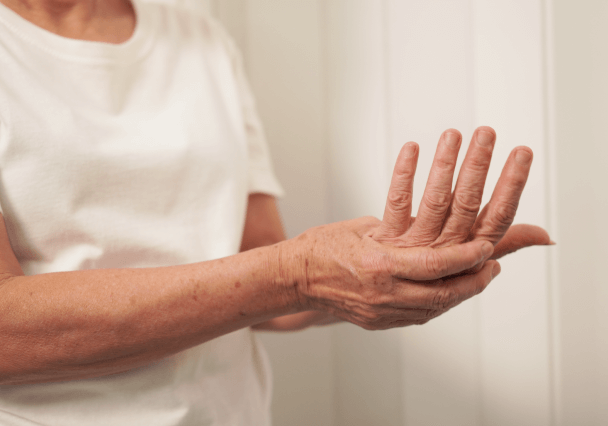
Changes in Skin Temperature
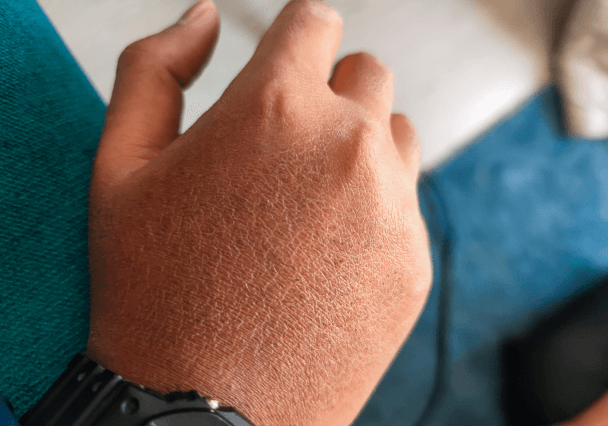
Skin Color Changes
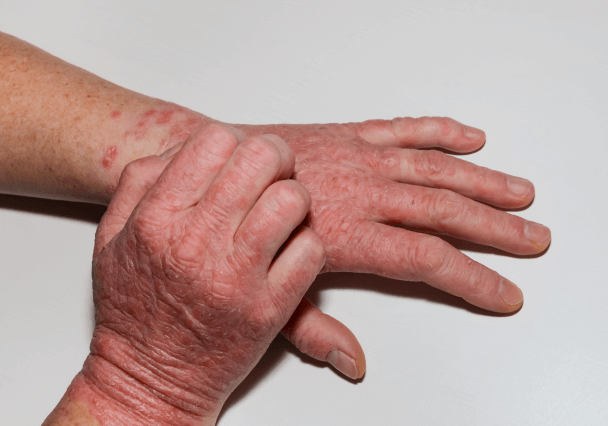
Altered Skin Texture
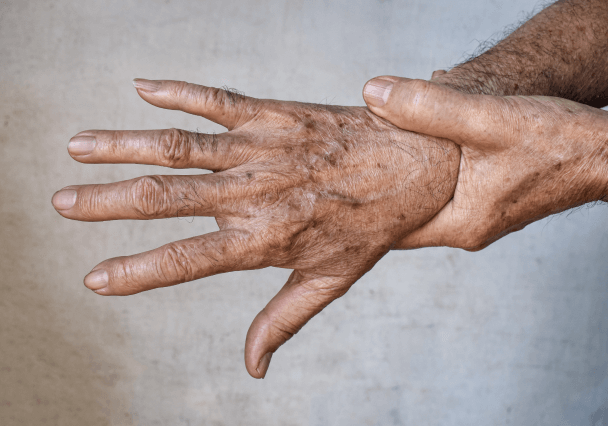
Trophic Changes

Joint Stiffness

Muscle Spasms

Abnormal Sweating

Coordination Difficulty

Bone & Tissue Changes
Expanded Guide
- Chronic & Severe Pain: The pain associated with CRPS is often described as burning, throbbing, or stabbing. It may feel like intense, ongoing pain that doesn’t subside, even after the original injury has healed. This pain is usually much more severe than the injury itself warrants, and it can spread from the site of the original trauma to other areas of the body. The pain may be continuous or triggered by movement, temperature changes, or even minor stimuli like a light touch.
- Sensitivity to Touch: In CRPS, the affected limb can become highly sensitive to touch. This condition, known as allodynia, means that stimuli that wouldn’t normally cause pain, such as a light breeze, the touch of clothing, or gentle contact, can result in intense pain. This hypersensitivity can be so extreme that patients may avoid using the affected limb entirely, further complicating the recovery process.
- Swelling: Swelling is a common feature in CRPS. The affected area often becomes swollen, sometimes to a degree that the skin appears tight and shiny. This swelling can fluctuate over time, worsening with activity or pressure. It may lead to discomfort and further restrict movement in the affected limb.
- Changes in Skin Temperature: One of the distinguishing symptoms of CRPS is a noticeable change in the skin temperature of the affected limb. This temperature variation can range from feeling much warmer than the unaffected limb to feeling cold. These fluctuations are related to abnormal blood flow or dysfunction in the autonomic nervous system, which controls involuntary body functions like blood circulation and sweating.
- Skin Color Changes: The skin of the affected limb often changes color. These changes can range from red to purple or blue, and in some cases, the skin may appear blotchy. The discoloration can come and go, often changing several times throughout the day, which reflects the erratic nature of blood flow to the area.
- Altered Skin Texture: In CRPS, the texture of the skin over the affected area may become noticeably different. Early on, the skin may appear shiny and thin, while in later stages, it may thicken or become leathery. The skin may also become unusually dry or excessively sweaty. These skin changes reflect abnormalities in the autonomic nervous system, which controls skin function.
- Trophic Changes: CRPS can also affect the growth of hair and nails in the affected area. Patients may notice that their hair grows more quickly than usual or, conversely, that hair growth slows down or stops. The nails may become thickened, grooved, brittle, or develop ridges, and the growth of nails may accelerate or slow.
- Joint Stiffness: Stiffness in the joints surrounding the affected area is common. As CRPS progresses, patients may find it increasingly difficult to move the affected limb due to pain, swelling, and muscle weakness. The joints in the affected limb may become stiff, further limiting mobility. Over time, if left untreated, CRPS can cause contractures (permanent shortening of muscles or tendons), resulting in deformities.
- Muscle Spasms: In some cases, CRPS leads to involuntary muscle contractions or spasms. Patients may also experience tremors (shaking) or a jerking motion in the affected limb. Over time, the affected muscles may weaken due to disuse or atrophy, which occurs when the muscles waste away. This can make the limb appear smaller compared to the unaffected side, and muscle weakness can further restrict movement and function.
- Abnormal Sweating: Another feature of CRPS is abnormal sweating in the affected area. Some patients may experience excessive sweating (hyperhidrosis), while others may notice a lack of sweating. These changes are also linked to dysfunction in the autonomic nervous system, which normally regulates sweating.
- Coordination Difficulty: As the condition progresses, individuals with CRPS may experience difficulty with coordination, balance, and fine motor skills in the affected limb. This can lead to problems with everyday activities, such as walking, using utensils, or grasping objects.
- Bone & Tissue Changes: In severe or prolonged cases, CRPS can lead to changes in bone density, leading to conditions like osteoporosis. This makes the bones in the affected limb weaker and more prone to fractures. Soft tissue damage, such as muscle wasting, can also occur, particularly if the condition persists untreated.
Frequently Asked Questions
Have more questions? Schedule a consultation with Dr. Patel to gain additional insights and discuss treatment options. We are committed to advancing your health through patient education and a safe, minimally invasive approach.
There is no single test for CRPS. Diagnosis is primarily based on a patient’s medical history, a physical exam, and ruling out other conditions. Diagnostic imaging or nerve conduction studies may be used to support the diagnosis.
Treatment for Complex Regional Pain Syndrome (CRPS) typically involves a multidisciplinary approach, as no single treatment is effective for everyone. Pain management is a central focus and may include medications such as nonsteroidal anti-inflammatory drugs (NSAIDs), opioids, or corticosteroids to reduce pain and inflammation. Physical therapy is also a critical component, aiming to restore movement, improve strength, and prevent further deterioration of the affected limb. In some cases, nerve blocks or sympathetic nerve injections are used to alleviate pain by targeting specific nerves. Other treatment options include psychological therapy to address the emotional and psychological effects of chronic pain, and more advanced interventions such as spinal cord stimulation or other neuromodulation techniques that help modulate pain signals in the nervous system. Some individuals may benefit from less conventional treatments like mirror therapy, graded motor imagery, or ketamine infusions, which are designed to reduce pain perception or modify how the brain processes pain. The combination of these approaches is tailored to each individual’s condition, with the goal of improving functionality and quality of life.
The duration of Complex Regional Pain Syndrome (CRPS) can vary significantly from one person to another. In some cases, CRPS may improve and even go into remission within a few months, particularly if it is diagnosed and treated early. However, for others, the condition may become chronic, lasting for years or even indefinitely. The length of time CRPS persists depends on several factors, including how quickly the diagnosis is made, the severity of the symptoms, and the individual's response to treatment. Early intervention typically improves outcomes and can shorten the duration of the condition. While some individuals experience improvement over time with proper therapy, others may have persistent or recurring symptoms. A personalized treatment plan is crucial to managing the condition and maintaining a good quality of life.
Complex Regional Pain Syndrome (CRPS) can lead to several complications, especially if it is not diagnosed and treated early. One of the most common complications is chronic, severe pain, which can persist long-term and significantly impact a person's quality of life. Additionally, the lack of movement in the affected limb can result in muscle atrophy, where the muscles weaken or waste away, as well as joint stiffness or contractures, which can further limit mobility. Disuse of the limb may also lead to bone loss (osteoporosis), increasing the risk of fractures. Emotionally, the constant pain and physical limitations may contribute to anxiety, depression, and other psychological issues, along with sleep disturbances. In some cases, CRPS can spread to other parts of the body, though this is relatively rare. If left untreated or inadequately managed, CRPS may lead to a loss of function in the affected limb, making daily activities more challenging. Early intervention and comprehensive treatment are crucial in minimizing these complications and improving long-term outcomes.
Gramercy Center
Take the first step towards a healthier life by scheduling your initial consultation with Dr. Patel. At our clinic, we specialize in minimally invasive procedures that offer faster recovery, improved function, and decreased pain. Our client-centered approach ensures that you receive the highest quality care tailored to your unique needs. We look forward to offering you an exceptional experience.
